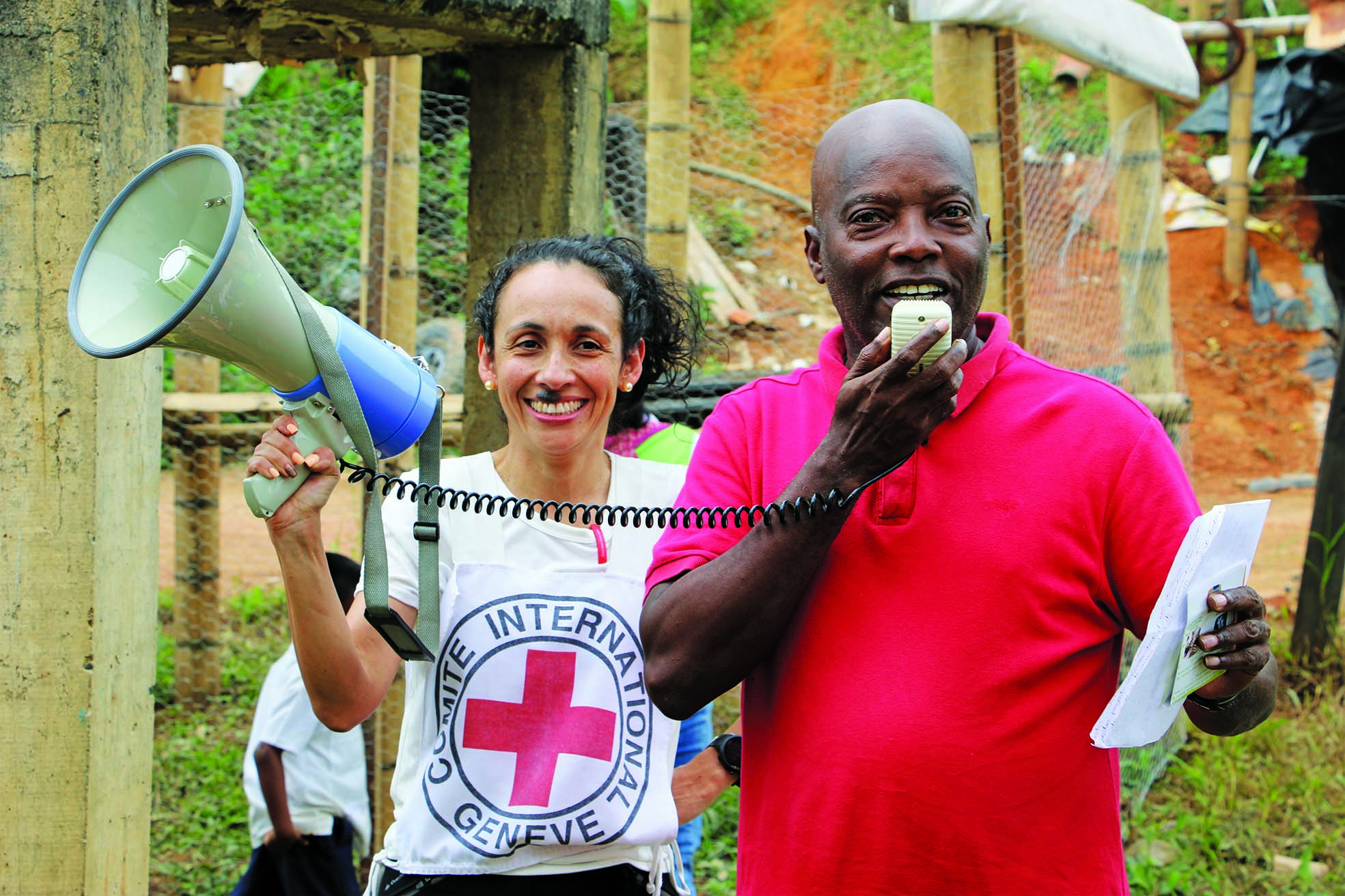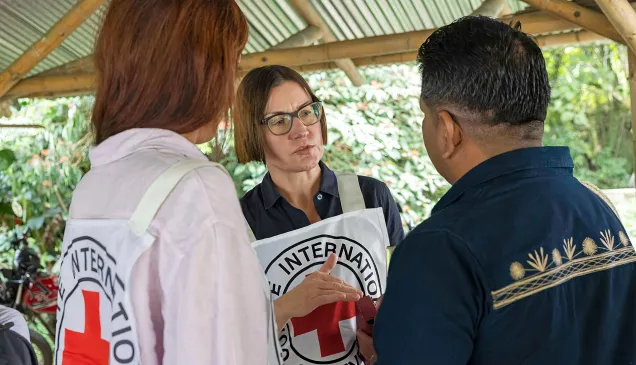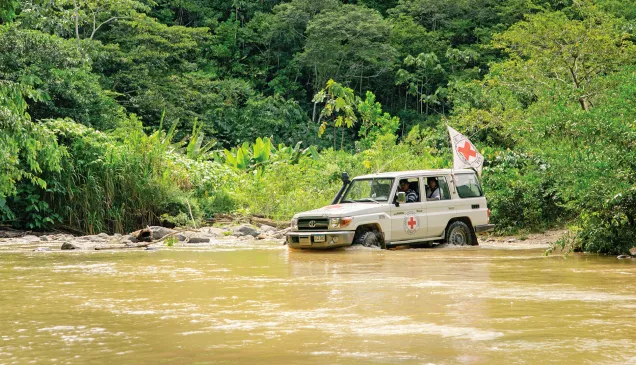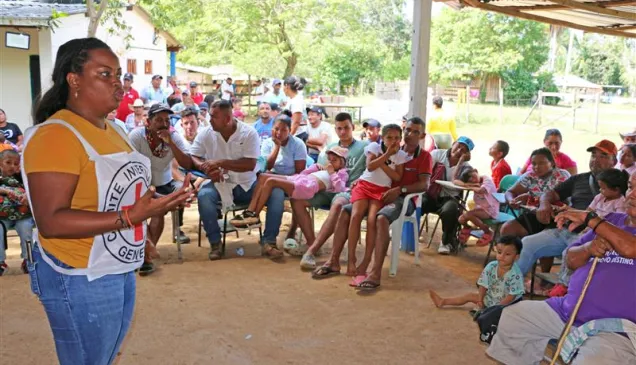Humanitarian Report 2025: the situation in Colombia reached its most critical point in eight years in 2024.
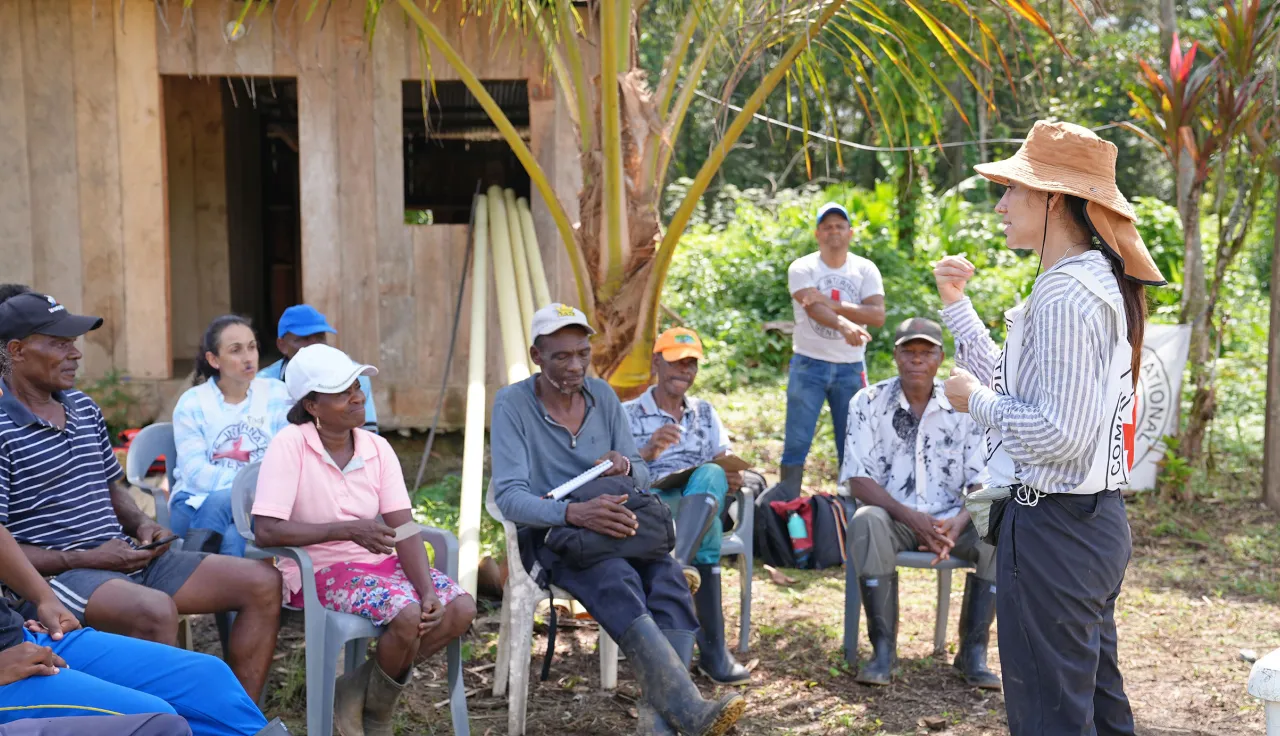
In 2024, the humanitarian situation in Colombia deteriorated to its worst point in eight years, warned the International Committee of the Red Cross (ICRC) at the launch of its Humanitarian Challenges 2025 report. Hostilities intensified, respect for international humanitarian law (IHL) diminished, and armed groups tightened their control over the civilian population, putting the lives, integrity and dignity of thousands of people at grave risk.
“The suffering of these communities is not an unavoidable consequence of armed conflict. It is the direct result of the lack of respect for humanitarian norms designed to protect those not taking part in the fighting,” said Patrick Hamilton, head of the ICRC’s delegation in Colombia. “Civilians are paying the price, but they shouldn’t have to.”
In 2024, the ICRC recorded 382 alleged violations of IHL, reflecting diminishing respect for norms that protect civilians and those no longer taking part in hostilities. Of those violations, 44 per cent compromised the lives or physical or mental integrity of people protected under IHL. A further 33 percent were related to the conduct of hostilities, in particular failure by the parties to take precautions to protect civilians and civilian property from the effects of attacks. The remaining 23 per cent included acts that hindered communities’ well-being and their ability to meet their essential needs and access essential services.
These figures, which represent only those violations that the ICRC was able to document itself, nevertheless illustrate the difficulty of receiving protection for those in Colombia who are not participating in the hostilities. The ICRC is deeply concerned about this lack of respect for IHL and reiterates that the parties to the conflict remain responsible for safeguarding the civilian population, no matter what.
No excuses: The protection of civilians and compliance with international humanitarian law are not optional
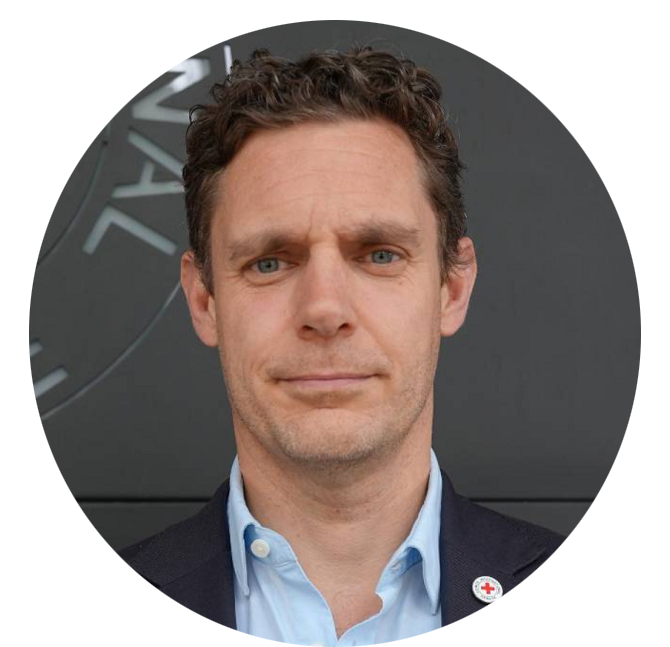
Patrick Hamilton
Head of Delegation of CICR in Colombia
At the beginning of my mission as head of the delegation of the International Committee of the Red Cross (ICRC) in Colombia, I was told that armed conflicts in the country had intensified and, as a result, the humanitarian situation had deteriorated. During 2024, violations of international humanitarian law increased in the areas most affected by these conflicts, with humanitarian consequences.
Colombia: Efforts to protect civilians are failing

In 2024, the humanitarian situation in Colombia got much worse. Armed groups split into factions and were reconfigured, territorial disputes between them intensified, armed actions increased and, in areas controlled by armedgroups, mechanisms to control civilians were tightened.
Moreover, as the ceasefires ended, hostilities between the national security forces and some of these groups resumed. All this significantly increased civilians' exposure to serious protection risks and violations of international humanitarian law.
The constant danger of explosive hazards
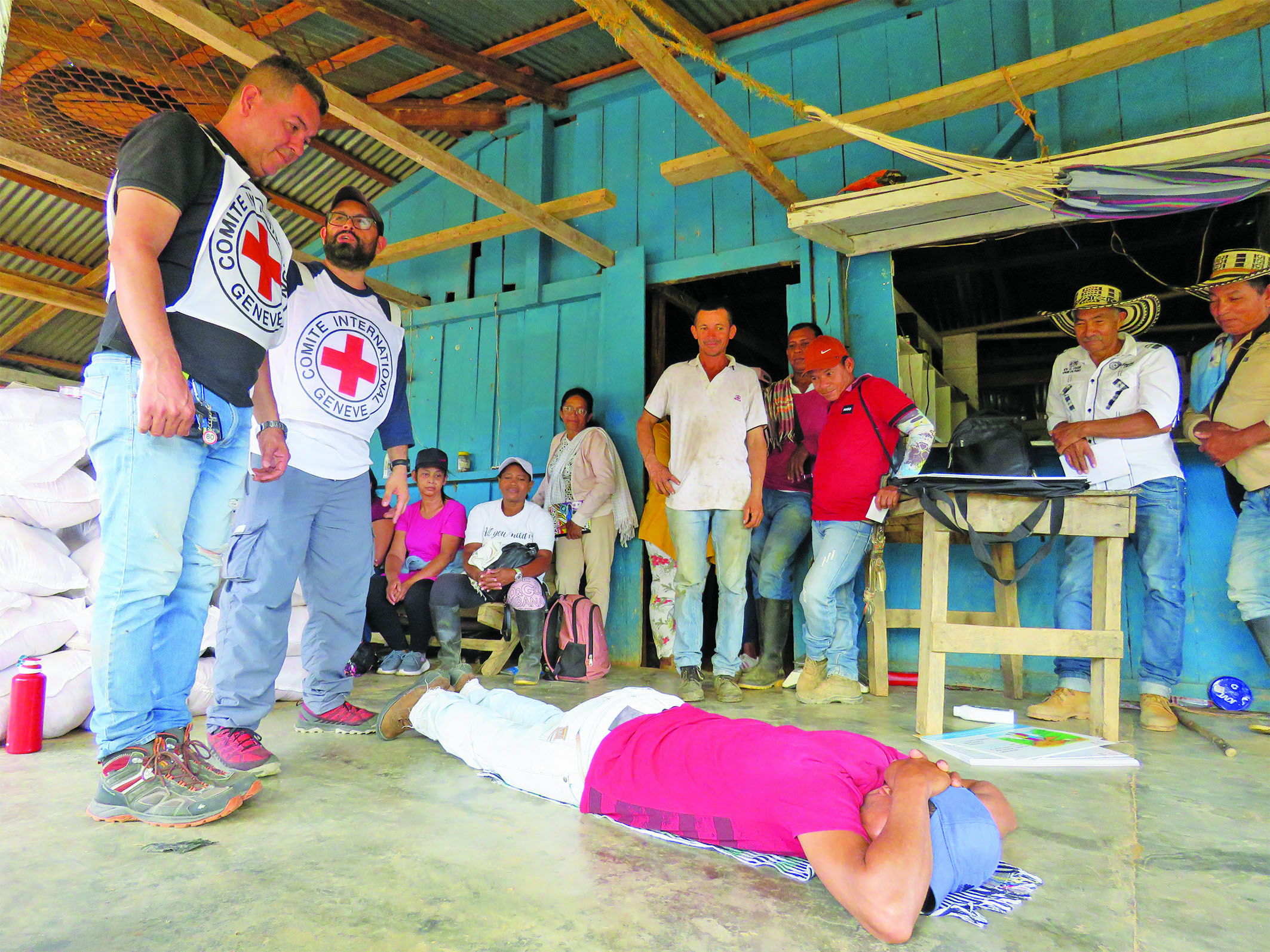
The presence, use and abandonment of explosive hazards have devastating effects on civilians. In 2024, entire communities were displaced or confined due to theconstant threat posed by these explosive hazards.
This transformed their ways of life, as they could no longer move freely through their territories. Many people lost their means of subsistence.
CONFINEMENT, DISPLACEMENT AND DISRUPTION OF LIVELIHOODS
In 2024, community confinement in Colombia became more widespread than at any time in the last eight years.
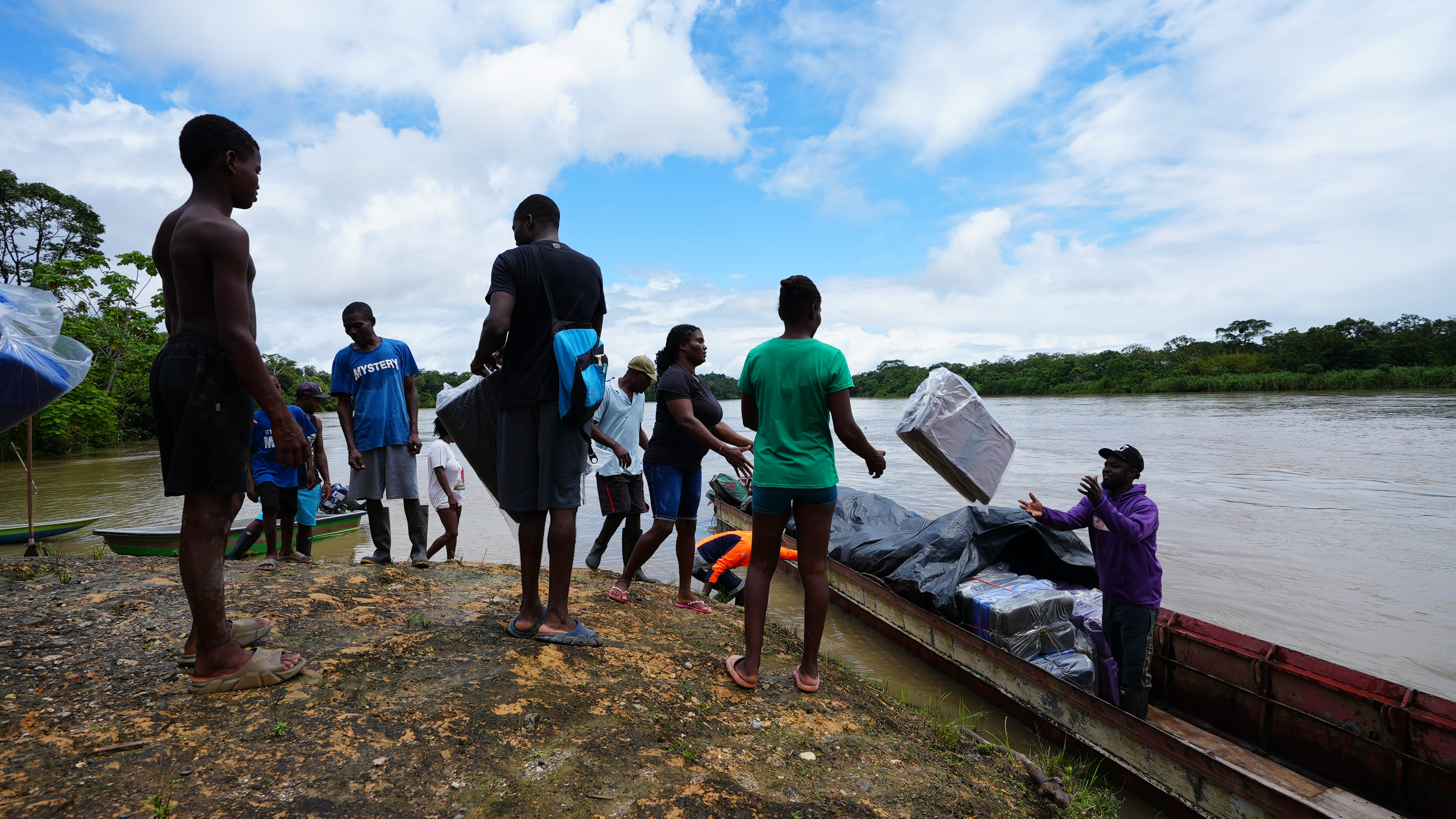
Confinement events increased by 102 per cent, and the affected population grew by 89 per cent compared with the previous year. According to figures from the Comprehensive Victim Support and Reparation Unit,* 88,874 people were confined in 12 departments of the country over the course of the year.
In some cases, communities were confined because of direct threats from armed groups; in others, they adopted protective measures, including limiting mobility, due to the risk of confrontations or the presence of explosive hazards in the area.
Disappearance: The pain of not knowing
In Colombia, people continue to disappear. It is a never-ending tragedy. Thousands of families have searched tirelessly for their loved ones for years, even decades. They face countless obstacles, difficulties and, in many cases, stigmatization for demanding answers about what happened to their relatives and their whereabouts.
Health care: Another casualty of the armed conflict
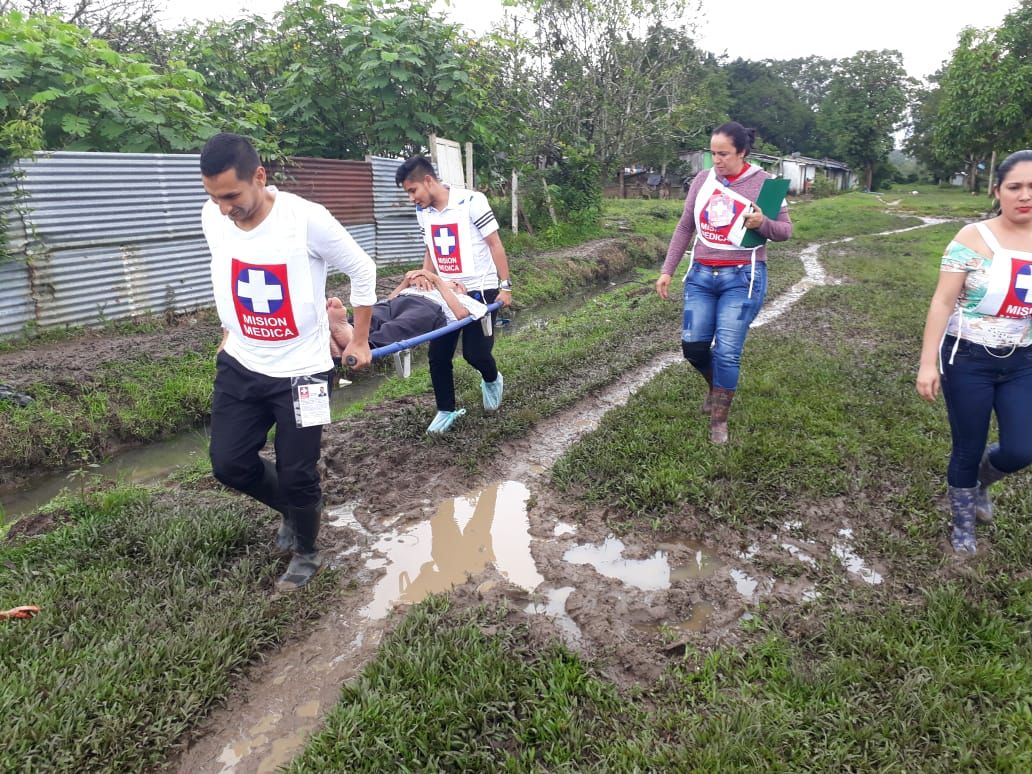
In 2024, another of the humanitarian consequences that intensified was violence against health-care workers. The National Medical Mission Board recorded 201 infractions (events related to the armed conflict). These included particularly serious events, such as the homicide of five people.
Victims/survivors of sexual violence: Invisibility and a lack of protection

We are also worried about the incidence of sexual violence in the areas most affected by armed conflicts and violence. This type of violence often goes unseen. Many victims/survivors choose not to report sexual violence, out of fear of retaliation, shame or guilt. As a result, the figures do not reflect the real magnitude of this phenomenon. In addition, a large number of cases go unreported because people distrust the institutions or face barriers to accessing the state assistance pathway.
Classification of the armed conflicts in Colombia
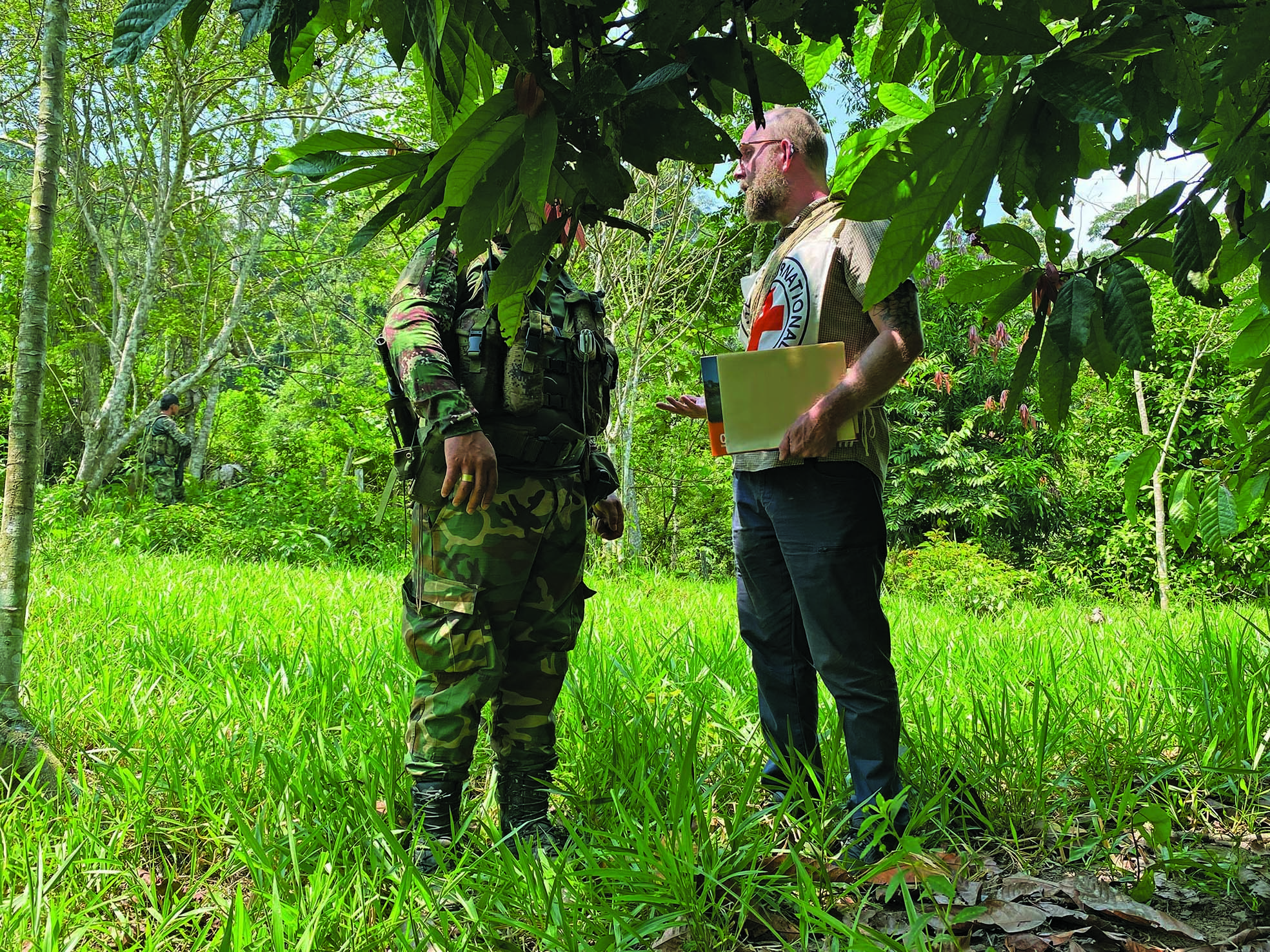
The complex reality described in the previous sections is partly the result of the fragmentation and reconfiguration of armed groups. The unstable and constantly changing scenario in Colombia has intensified the humanitarian challenges. However, our current legal classification of the armed conflicts in Colombia does not reflect recent changes, since at the end of 2024, we did not have enough accurate information to establish a new classification.
The impact of armed conflicts on children

In 2024, state and non-state armed actors in Colombia continued to directly involve children in the conflicts. For example, information gathered by our teams in the fieldshowed a large increase in the recruitment, use and participation of children in the hostilities.
Decent detention conditions are still a long way off

In 2024, detention conditions for people deprived of their liberty continued to deteriorate, as did the welfare and safety of the staff of the National Penitentiary and Prison Institute (INPEC in Spanish). This was despite the Colombian government having declared a prison emergency in February 2024. It should be noted that the INPEC and the Penitentiary and Prison Services Unit (USPEC in Spanish) are civilian bodies. They are not part of the Military Forces of Colombia, nor do they directly participate in the hostilities.
Learn more about our work in Colombia
Media Contact
Lorena Hoyos, CICR, Bogotá
Public Relations Officer
Phone: +57 310 221 81 33
Email: bhoyosgomez@icrc.org
Laura Santamaría, CICR, Bogotá
Communications Coordinator
Phone: +57 311 491 07 89
Email: lsantamariabuitrago@icrc.org

